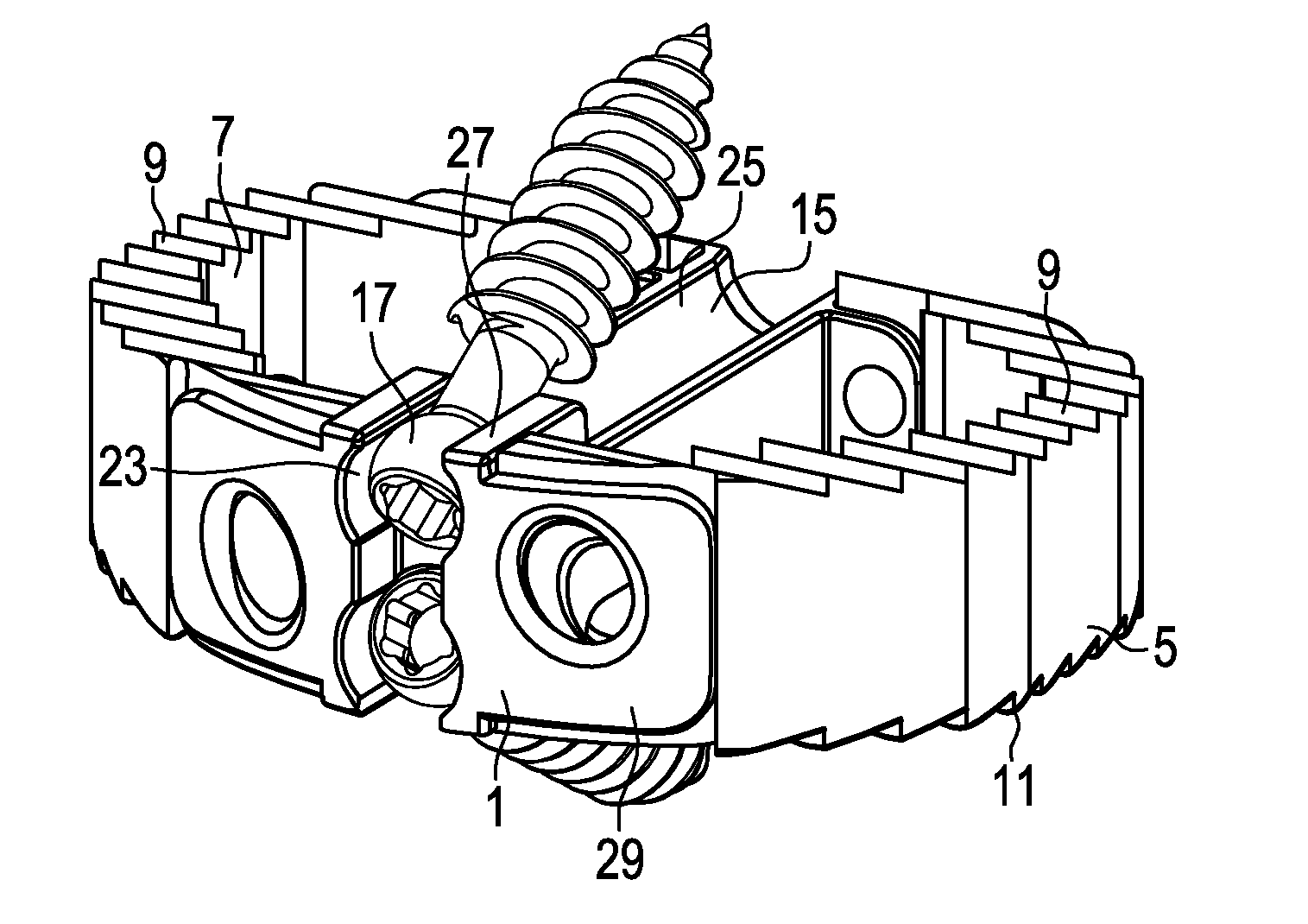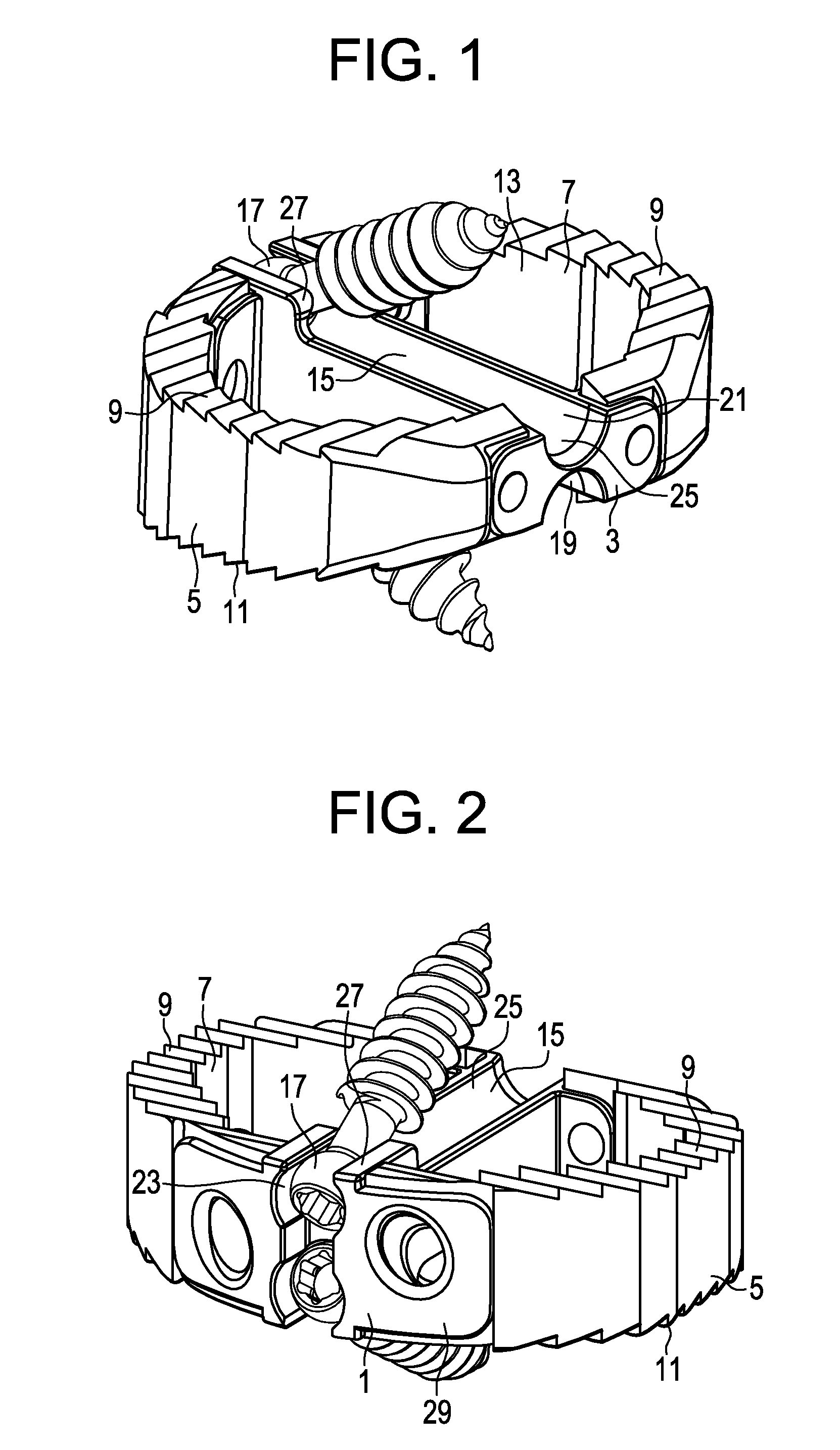Zero Profile Spinal Fusion Cage
a cage and spinal fusion technology, applied in the field of zero-profile spinal fusion cages, can solve the problems of nerve irritation and pain, affecting the flow of waste products out of the disc, and causing the cell within the nucleus pulposus to emit toxic amounts of cytokines and mmps,
- Summary
- Abstract
- Description
- Claims
- Application Information
AI Technical Summary
Problems solved by technology
Method used
Image
Examples
Embodiment Construction
[0049]Now referring to FIGS. 1 and 2, there is provided an intervertebral fusion cage comprising:[0050]a) a proximal wall 1 and a distal wall 3,[0051]b) first 5 and second 7 side walls connecting the proximal and distal walls, an upper bearing surface 9 adapted for gripping an upper vertebral endplate and a lower bearing surface 11 adapted for gripping a lower vertebral endplate, the upper bearing surface having at least one upper opening 13 therethrough adapted to promote bony fusion, the lower bearing surface having at least one lower opening (not shown) therethrough adapted to promote bony fusion,[0052]c) a first guide surface depression 15 formed in the upper bearing surface and extending substantially from the proximal wall to the distal wall, the depression adapted for distal reception of a first screw head 17, and[0053]d) a second guide surface depression 19 formed in the lower bearing surface and extending substantially from the proximal wall to the distal wall, the second d...
PUM
| Property | Measurement | Unit |
|---|---|---|
| diameter | aaaaa | aaaaa |
| median length | aaaaa | aaaaa |
| median length | aaaaa | aaaaa |
Abstract
Description
Claims
Application Information
 Login to View More
Login to View More - R&D
- Intellectual Property
- Life Sciences
- Materials
- Tech Scout
- Unparalleled Data Quality
- Higher Quality Content
- 60% Fewer Hallucinations
Browse by: Latest US Patents, China's latest patents, Technical Efficacy Thesaurus, Application Domain, Technology Topic, Popular Technical Reports.
© 2025 PatSnap. All rights reserved.Legal|Privacy policy|Modern Slavery Act Transparency Statement|Sitemap|About US| Contact US: help@patsnap.com



